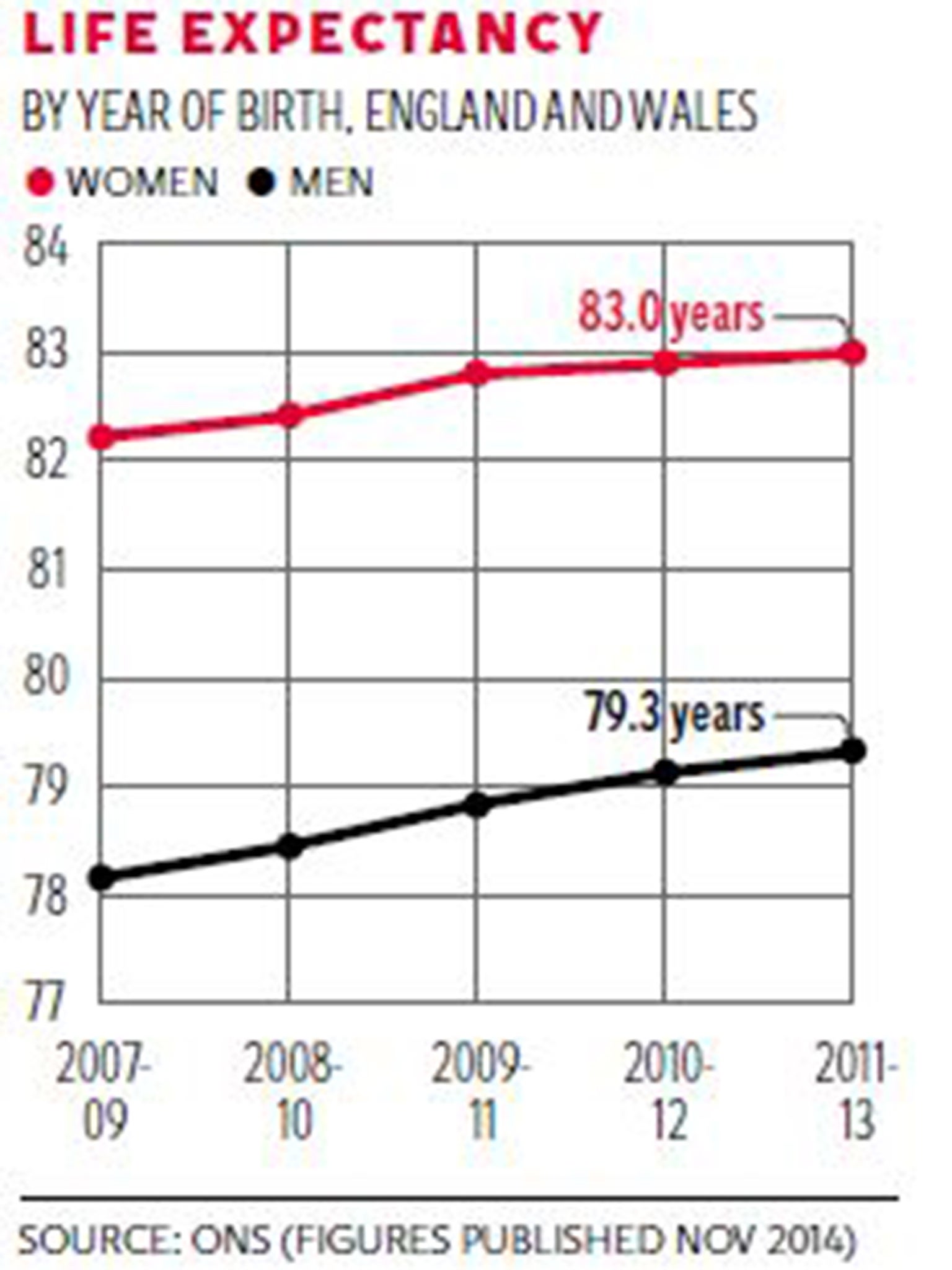Fall in life expectancy raises alarm amid fears that cuts and pressure on NHS may be to blame for earlier deaths
Government cuts to council budgets have led to reductions of £3.5bn in their adult social care spending over the past four years

Your support helps us to tell the story
From reproductive rights to climate change to Big Tech, The Independent is on the ground when the story is developing. Whether it's investigating the financials of Elon Musk's pro-Trump PAC or producing our latest documentary, 'The A Word', which shines a light on the American women fighting for reproductive rights, we know how important it is to parse out the facts from the messaging.
At such a critical moment in US history, we need reporters on the ground. Your donation allows us to keep sending journalists to speak to both sides of the story.
The Independent is trusted by Americans across the entire political spectrum. And unlike many other quality news outlets, we choose not to lock Americans out of our reporting and analysis with paywalls. We believe quality journalism should be available to everyone, paid for by those who can afford it.
Your support makes all the difference.Health officials are investigating a “statistically significant, sustained” decline in life expectancy among elderly people in some parts of England, amid warnings that cuts to social care and pressures on the NHS may be contributing to earlier deaths.
Public Health England said it was scrutinising life expectancy trends following an alert from a council in the North-west of England warning it was “likely” that in many parts of the region “older people (over 85) are no longer living longer”.
An email from Blackburn with Darwen Council’s director of public health, Dominic Harrison, sent to regional colleagues and to Public Health England, said the council had seen a “sustained reduction” in life expectancy at 85 in its area. “Actual sustained cohort reductions in life expectancy such as this are now extremely unusual,” the email says.
Possible explanations for the decline include government cuts to councils’ social care budgets, a lack of capacity in the GP sector or pressure on hospitals, it adds.
Official figures show that, in the UK, women’s life expectancy at 85 has fallen slightly in recent years – bucking the expected trends of ever-longer lifespans.
Among men, life expectancy at 85 has remained stable nationally, but the email, sent before Christmas and seen by the Health Service Journal, says that in Blackburn and Darwen there have been reductions for both men and women, as well as some signs of a reduction in life expectancy for men at 65.
A spokesman for Public Health England said that while life expectancies could fluctuate from year to year, officials were “conducting further analysis of these trends” and would make the findings available within the next few weeks.
According to the Office for National Statistics, life expectancy at 85, which is calculated by analysing mortality rates over a three-year period, has fallen among women from 6.81 years in 2009-11 to 6.78 years in 2011-13 – a trend which reflects more dramatic declines in some areas.
Dr John Middleton, vice-president of the Faculty of Public Health, said that a decline in life expectancy at any age was a matter of concern and should be investigated.
“We’ve enjoyed improvements in life expectancy over many years and there’s nothing to guarantee that improvement goes on forever,” he said. “It is something that is a sentinel moment in public health terms if the trend of upward improvement does stop.”

Dr Middleton agreed that “inadequate social care and inadequate investment in preventive care for vulnerable older people” was one possible explanation.
The number of people in the UK who receive state-funded care in the home or in their community has fallen from around 1.8 million in 2008-09 to 1.3 million in 2012-13, with further reductions of an estimated 5.8 per cent last year, according to figures and a recent survey from the Association of Directors of Adult Social Services.
This follows government cuts to council budgets, which led to reductions of £3.5bn in their adult social care spending over the past four years.

A Department of Health spokesman said that the number of people living beyond 85 “has been increasing and is expected to increase further over the next few years” and that there were plans to increase social care funding.
“We know we need to work differently to respond to the challenge of our growing ageing population – our Care Act and the £5.3bn Better Care Fund, the first ever national programme to join up health and social care, will focus resources on helping people to live independently which will save money and prevent people from needing more support,” the spokesman said.
Martin McKee, professor of European public health at the London School of Hygiene and Tropical Medicine, said “cutbacks in social care and difficulty in accessing healthcare for the elderly” was one possible explanation for falling life expectancy.
“The other possibility we need to look at is that these were people who were in the middle of their working ages, particularly in the North of England, during the early 1980s when there was large-scale de-industrialisation, when their health would have been disadvantaged by job loss and dislocation that took place at that time,” he said.
Public Health England’s chief knowledge officer, John Newton, told the Health Service Journal: “Although there was a fall in life expectancy at age 85 in 2012, pre-analysis shows there was no further drop in 2013.
“[It is] influenced by many factors and has fluctuated from year to year in the past. However, PHE is currently conducting further analysis of these trends and we hope to make the findings available in the near future.”
Join our commenting forum
Join thought-provoking conversations, follow other Independent readers and see their replies
Comments